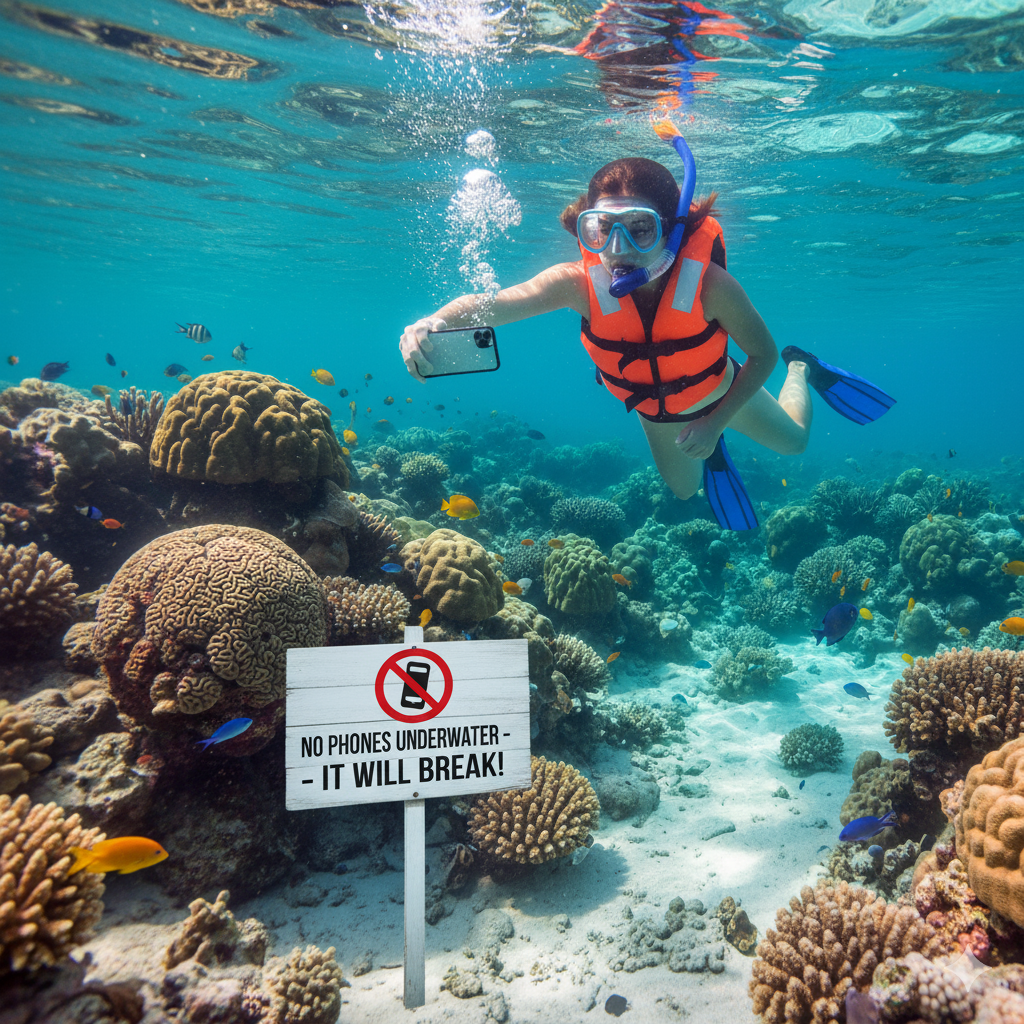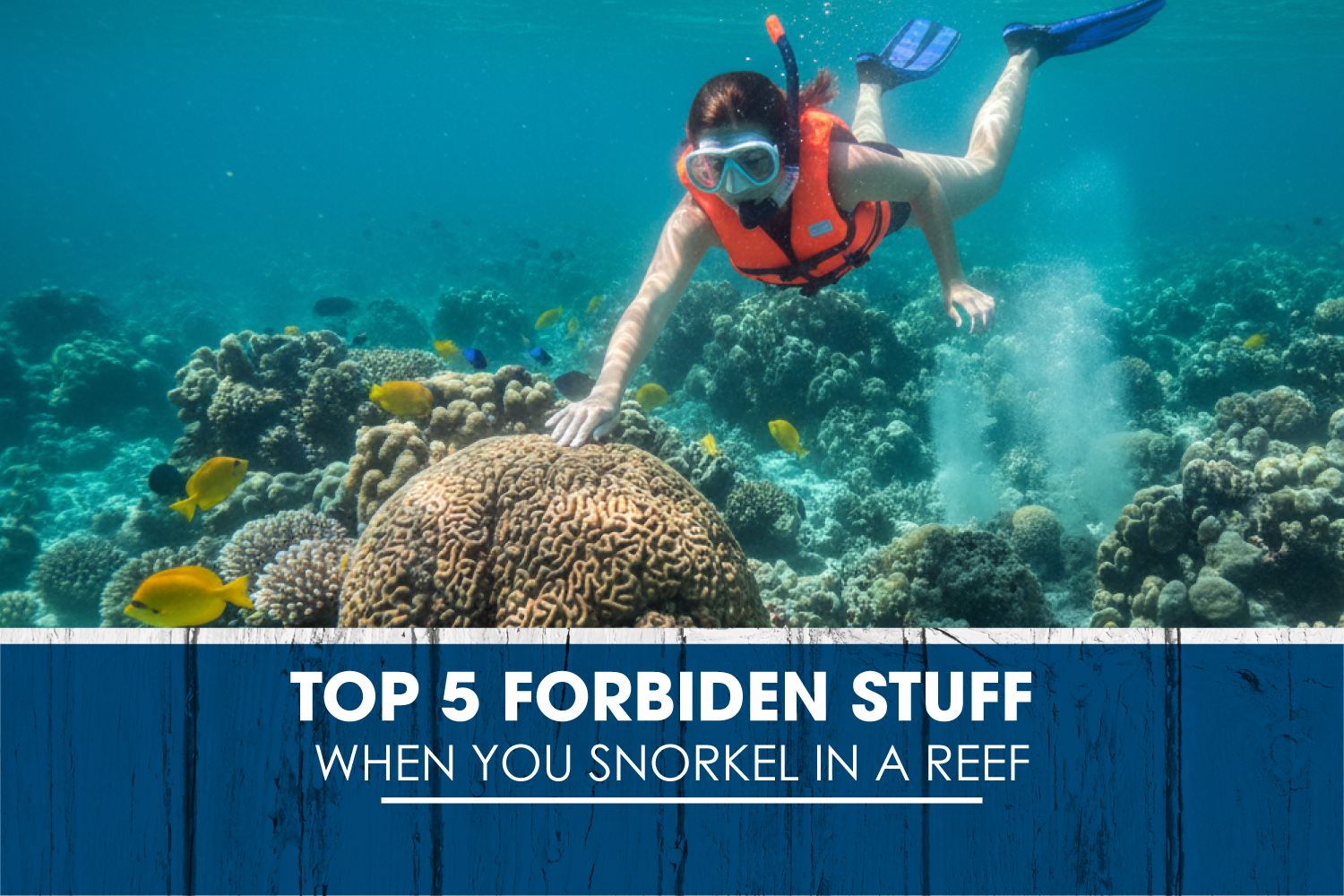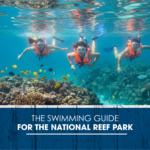The stunning reefs of the Riviera Maya make Puerto Morelos snorkeling one of the most breathtaking underwater adventures in Mexico. With its calm turquoise waters and rich marine biodiversity, this small fishing village offers an unforgettable experience for snorkelers of all levels.
However, preserving this underwater paradise requires awareness and responsibility. Many travelers unknowingly harm marine life through simple mistakes. In this guide, we’ll reveal the top 5 forbidden things to avoid when snorkeling in a reef, so you can protect nature while making the most of your adventure.
If you’re ready to explore the beauty of the Mesoamerican Reef safely and responsibly, book the Snorkel Adventuring Tour — a guided eco-experience designed to connect you with the magic of the Caribbean while protecting it.

1. Don’t Touch or Step on Coral Reefs
Coral reefs are living organisms — not rocks. Even the slightest touch can cause irreparable damage to their fragile structure.
Standing on or touching coral can kill the tiny polyps that build the reef and disrupt the entire ecosystem.
👉 Always float above the coral, control your buoyancy, and avoid standing in shallow areas. Respect the reef and enjoy observing its natural beauty from a distance.
2. Don’t Use Regular Sunscreen
Regular sunscreen often contains chemicals like oxybenzone and octinoxate, which are toxic to marine life and contribute to coral bleaching.
Before diving into the water, switch to reef-safe sunscreen or wear a long-sleeve rash guard to protect both your skin and the reef.
Remember: when snorkeling in Puerto Morelos, using biodegradable sunscreen isn’t just recommended — it’s required by local marine park regulations.
3. Don’t Feed the Fish
Feeding fish or marine life may seem harmless, but it disrupts their natural diet and behavior.
Fish start depending on human food, which affects their health and the balance of the reef’s ecosystem.
Let the magic of Puerto Morelos snorkeling happen naturally — the more you blend into the environment, the closer marine life will come to you.
4. Don’t Collect Shells or Coral
It’s tempting to take a seashell or coral piece home as a souvenir, but doing so damages the delicate balance of the ecosystem.
These natural elements are vital habitats and hiding spots for many marine species.
Instead, take photos and memories — or join the Snorkeling Adventure Tour to explore safely and leave no trace behind.
5. Don’t Snorkel Without a Certified Guide
The reef in Puerto Morelos is part of a protected marine park, and local guides are trained to ensure your experience is both fun and eco-friendly.
A certified guide will teach you proper snorkeling techniques, help you spot marine species, and make sure you avoid restricted zones.
Joining a guided tour guarantees a safer and more educational experience while contributing to the local community and conservation efforts.
Bonus Tip: Respect Marine Life
Never chase, grab, or disturb marine animals — this can cause them stress or harm.
Enjoy watching turtles, fish, and rays move freely in their natural habitat, and remember: you are a guest in their home.
Why Responsible Snorkeling Matters
Snorkeling responsibly not only keeps you safe — it helps preserve one of the planet’s most biodiverse ecosystems.
When you protect the reef, you ensure that future generations can enjoy the same beauty you experienced during your Puerto Morelos snorkeling adventure.
Ready to dive into this natural wonder?
Join the official Snorkeleling Adventure Tour and explore the Caribbean in the most sustainable way possible.
Follow Us on Social Media
Stay connected and explore more adventures from Snorkel Adventuring:
📘 Facebook
📸 Instagram
🎵 TikTok
▶️ YouTube
FAQs
1. Is Puerto Morelos snorkeling suitable for beginners?
Absolutely! The reef is located close to shore, and the calm, shallow waters make it perfect for beginners and families. Local guides ensure safety and provide all necessary gear.
2. What is the best time for snorkeling in Puerto Morelos?
The best months are from April to September, when the sea is calm, visibility is crystal clear, and marine life is most active.



